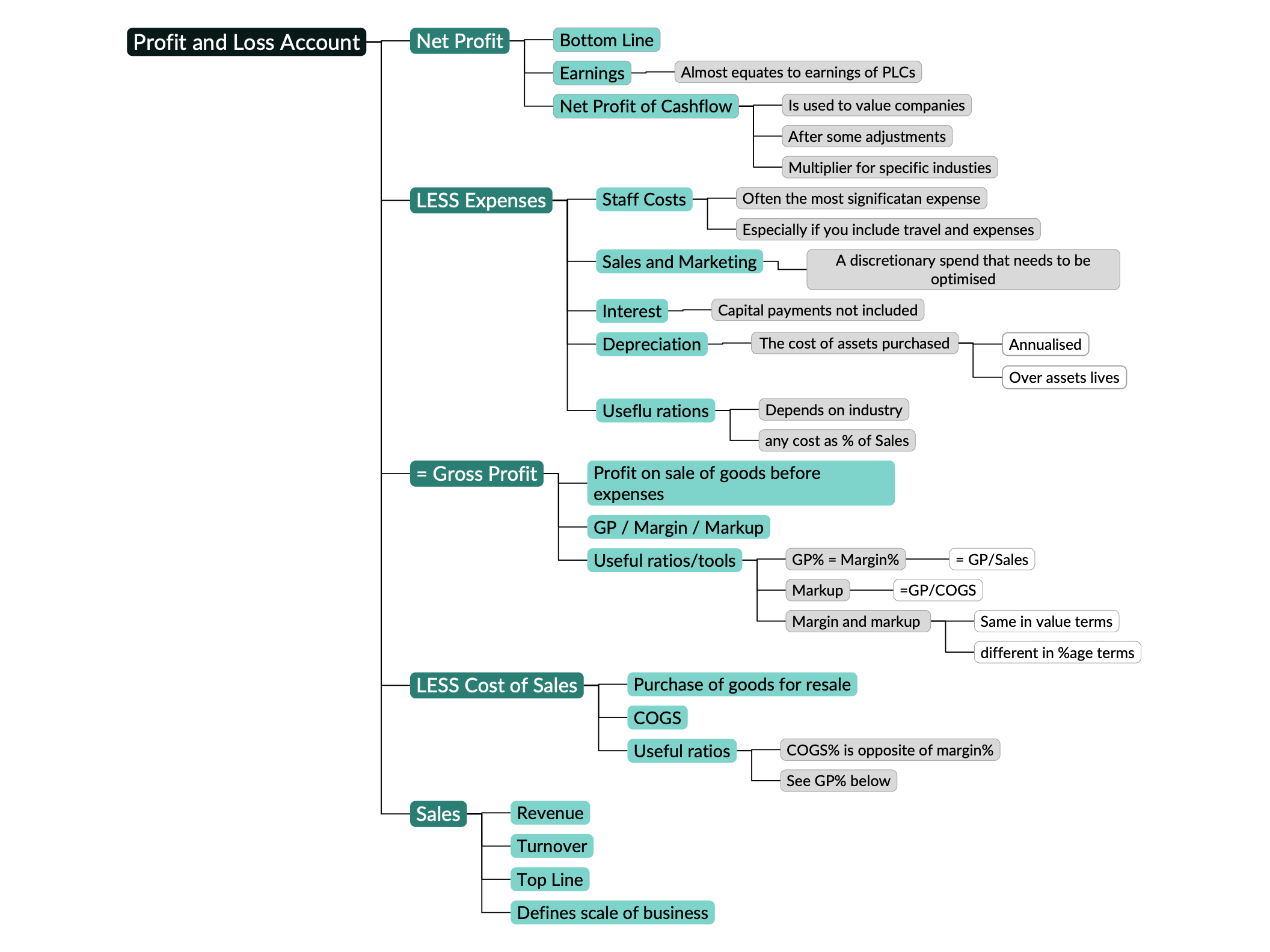Demystifying Accounting – Profit and Loss Account (P&L)
In a previous blog post, we discussed the importance of two key accounting documents for managing your business. Today, we will focus on the first document: the Profit and Loss Account, also known as the P&L or The Bottom Line.
The Profit and Loss Account (P&L) – The accounting bottom line
The Profit and Loss Account is a fundamental financial statement that provides valuable insights into your business’s financial performance over a specific period. It summarizes your revenue, expenses, and ultimately calculates your net profit or loss.
This statement is essential for understanding how well your business is performing financially. It allows you to assess whether you are generating enough revenue to cover your expenses and make a profit. By analysing the P&L account, you can identify areas where you may be overspending or underperforming in terms of sales.
Quick Information
Ready to optimise your financial strategies?


We are here to help
Need more info or help with your business accounts?
Our team are here to help. If you’re working on something and aren’t sure where to go next, our excellent customer service team are there to help.
3 key areas that you should analyse on your P&L depending on your business:
Sales ( or Turnover, Revenue, Income, Top-line)
This is the key measure that defines your business in financial terms. This includes all income generated from sales of goods or services provided by your business. It may also include any other sources of income specific to your operations, it is all-important and having a strong pipeline managed by competent people is paramount for business survival.
Gross Profit (or Gross Margin, GP)
This is the difference between Sales and Cost of Sales e.g. price of a pint vs. cost of the keg. It is usually more important if you sell products rather than services. It is usually expressed as a percentage of Sales and is a very useful measure for comparing against your previous performance or a competitor
Net Profit (or Net margin, Bottom line)
This is what remains after accounting for all the other expenses associated with running a business, such as payroll costs, overheads, marketing, interest, depreciation, and taxes. Ultimately, the key to long-term survival is profitability. Depending on your industry, you could be making over 50% or be content with 1%. In these times, breaking even is considered a luxury.
Other P&L items
The importance of these will depend on your type of business but major expense items to be tracked will usually include pay, marketing spend or overheads. Expressing these as a percentage of sales lends itself to comparing your performance over time and against your competition. and finally, Taxes is usually payable on profits after some adjustments but rates will vary widely depending on your legal status.
By regularly reviewing your P&L account, you can gain valuable insights into your business’s financial performance. It allows you to make informed. On the next update on this series we will examine the other key document the Balance Sheet
